Class 10 Exam > Class 10 Notes > Biology for GCSE/IGCSE > Leaf Structure
Leaf Structure | Biology for GCSE/IGCSE - Class 10 PDF Download
Leaf Structure & Adaptations for Photosynthesis
Leaf structure
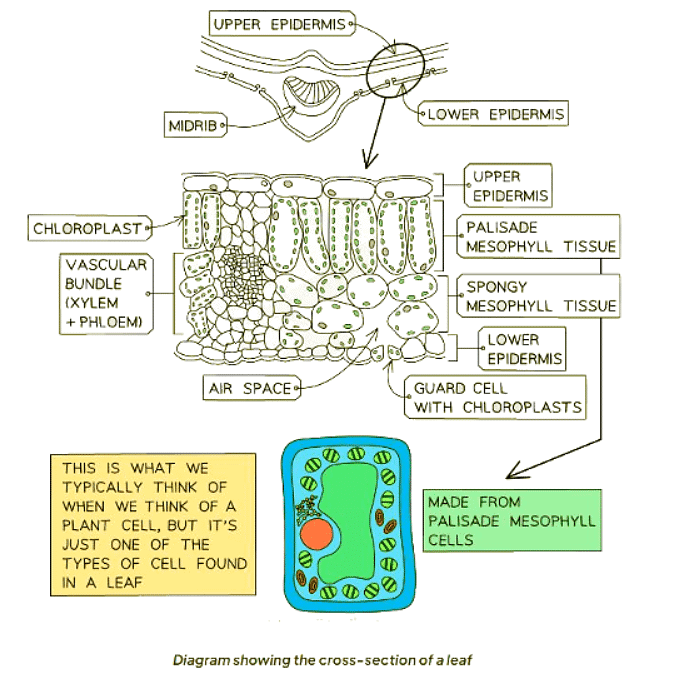
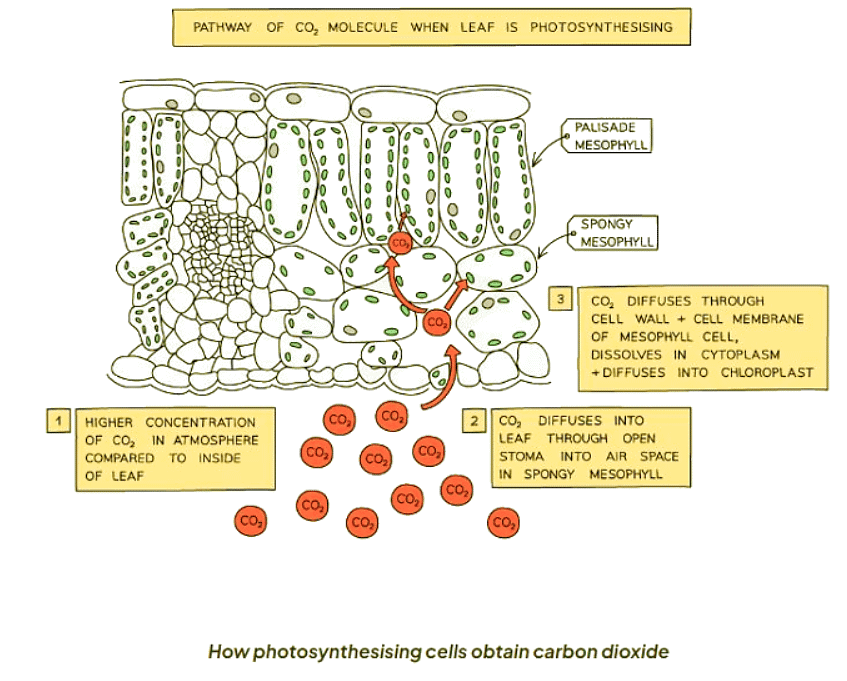
- Pathway of carbon dioxide from the atmosphere to chloroplasts by diffusion:
atmosphere → air spaces surrounding spongy mesophyll tissue → leaf mesophyll cells → chloroplasts
Leaf Structure Table
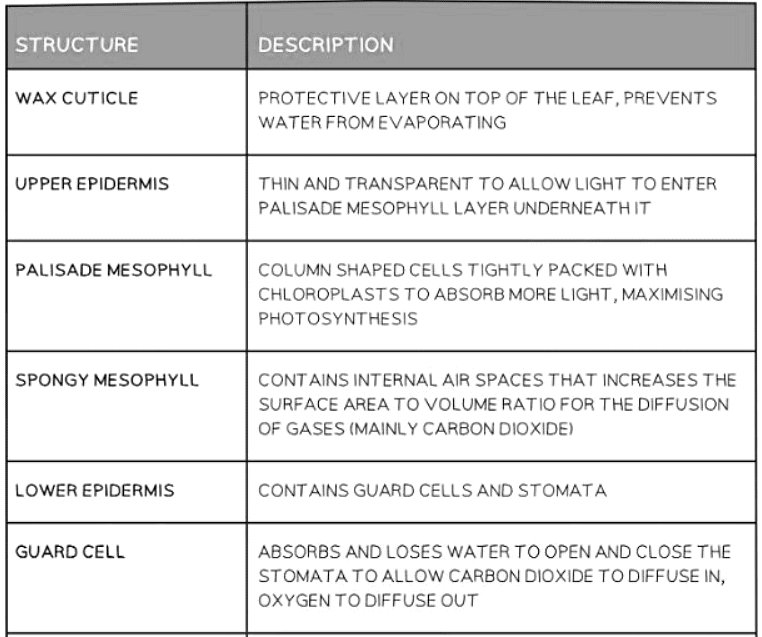
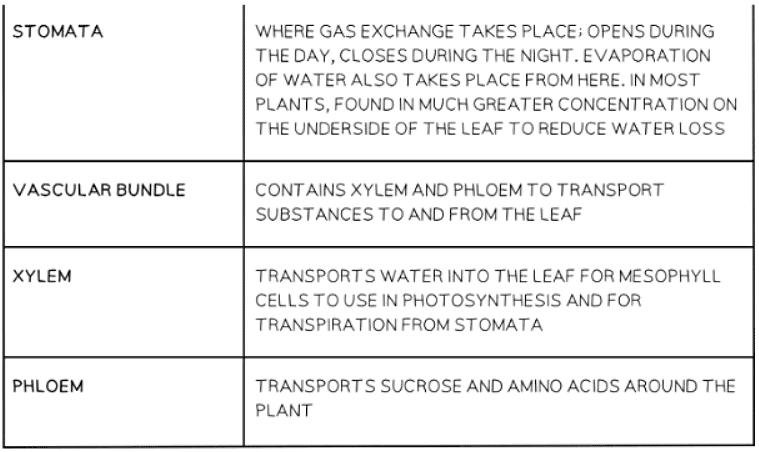
Adaptations of Leaf Structure for Photosynthesis Table
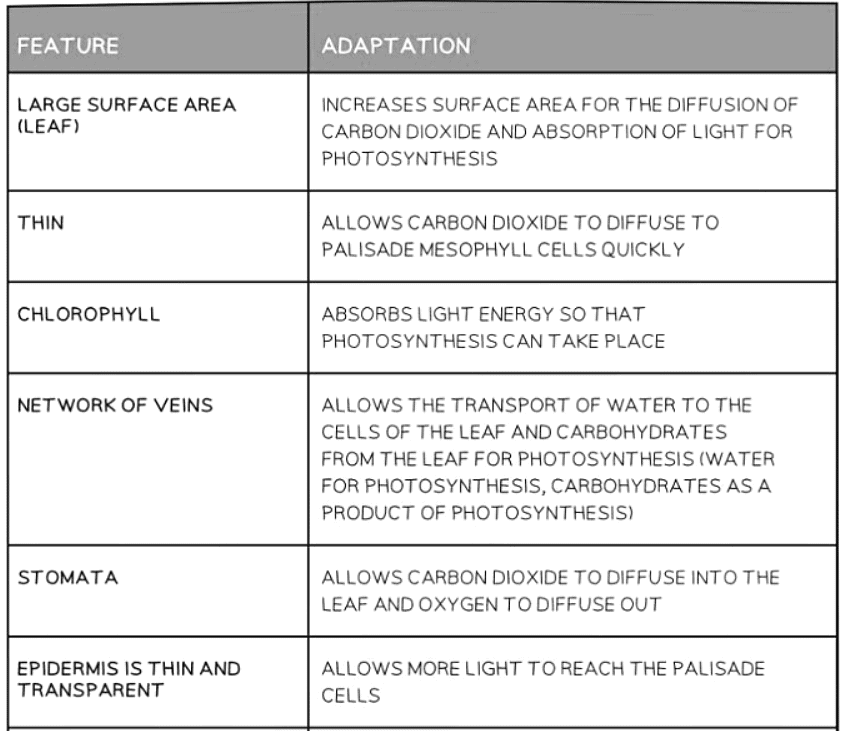
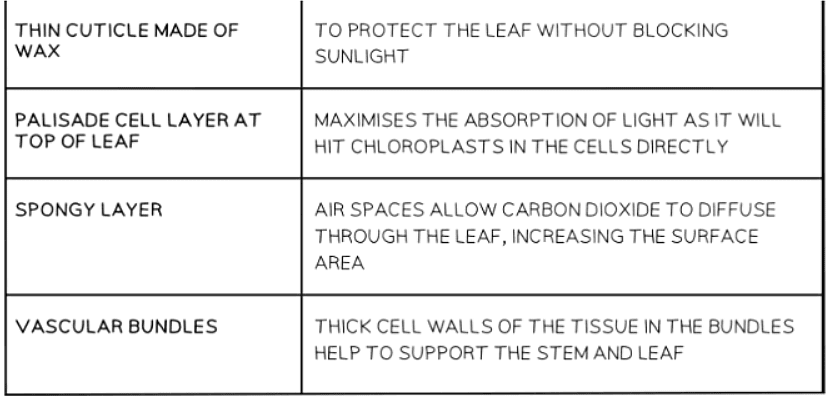
The document Leaf Structure | Biology for GCSE/IGCSE - Class 10 is a part of the Class 10 Course Biology for GCSE/IGCSE.
All you need of Class 10 at this link: Class 10
|
110 videos|210 docs|33 tests
|
FAQs on Leaf Structure - Biology for GCSE/IGCSE - Class 10
| 1. What is the main function of the leaf structure in plants? |  |
Ans. The main function of the leaf structure in plants is to carry out photosynthesis, where sunlight is converted into chemical energy (glucose) using chlorophyll.
| 2. How are leaves adapted for photosynthesis? |  |
Ans. Leaves are adapted for photosynthesis through their thin, flat shape which maximizes sunlight absorption, and the presence of stomata that allow for gas exchange necessary for photosynthesis.
| 3. What are the different layers of a leaf and their functions? |  |
Ans. The different layers of a leaf include the upper epidermis (protective layer), palisade mesophyll (where most photosynthesis occurs), spongy mesophyll (allows for gas exchange), and lower epidermis with stomata (regulates gas exchange).
| 4. How do plants obtain nutrients from the soil for photosynthesis? |  |
Ans. Plants obtain nutrients from the soil through their roots, which absorb water and minerals necessary for photosynthesis. These nutrients are then transported to the leaves through the xylem and phloem.
| 5. Why is chlorophyll important for photosynthesis in plants? |  |
Ans. Chlorophyll is important for photosynthesis in plants as it is a pigment that absorbs sunlight, allowing plants to convert light energy into chemical energy (glucose).
Related Searches
















